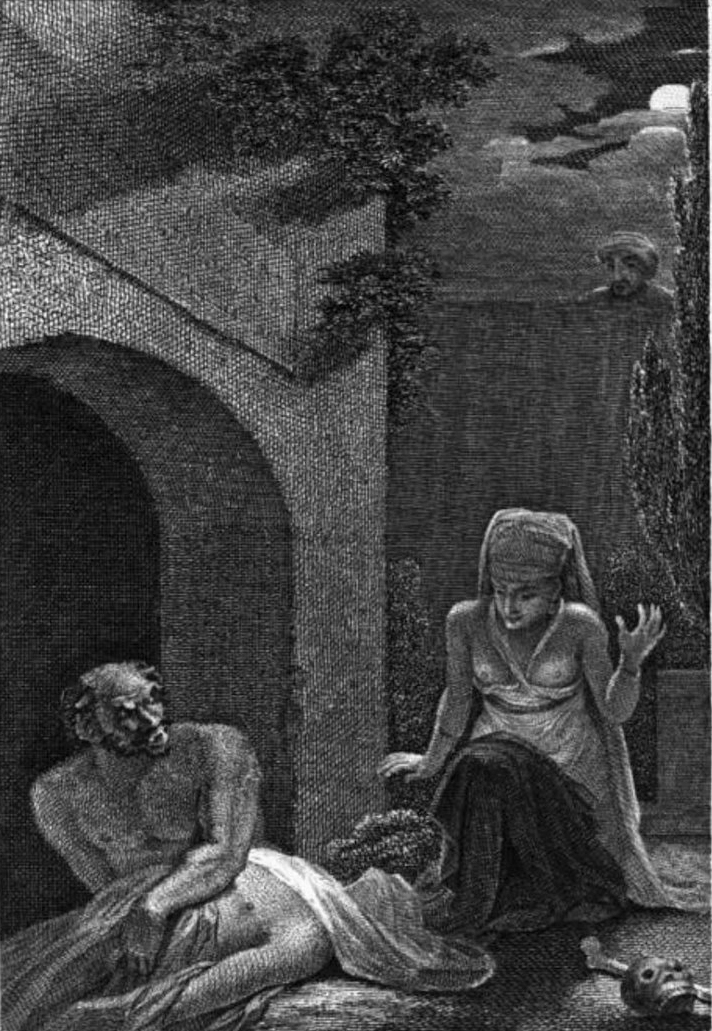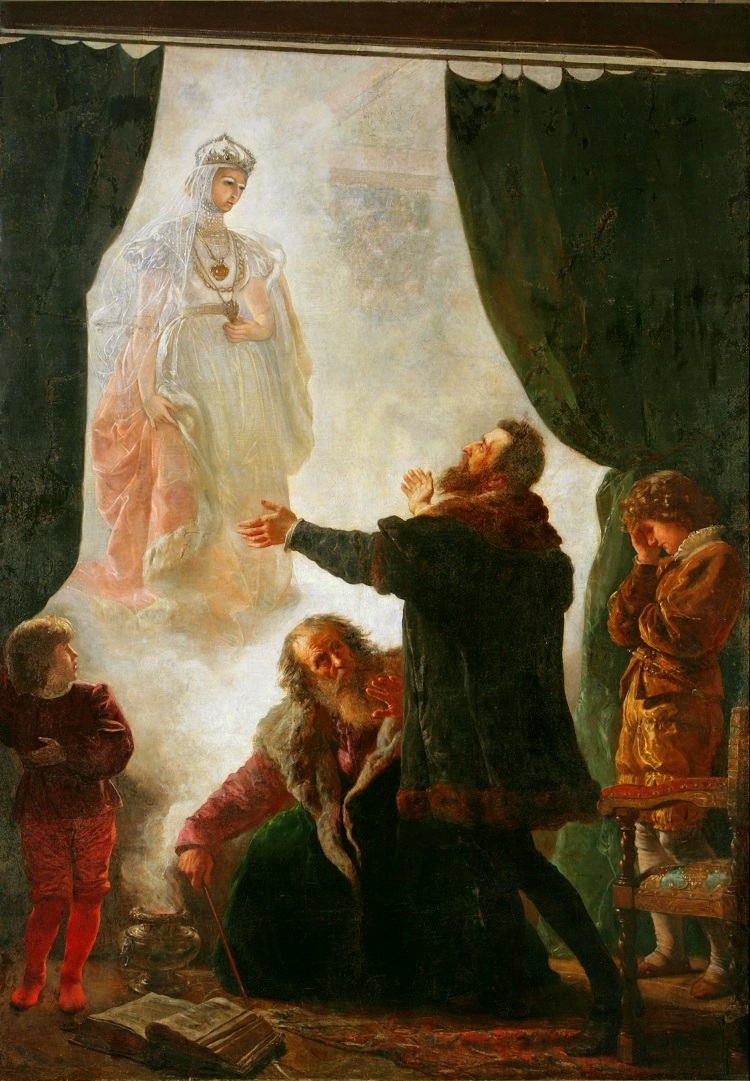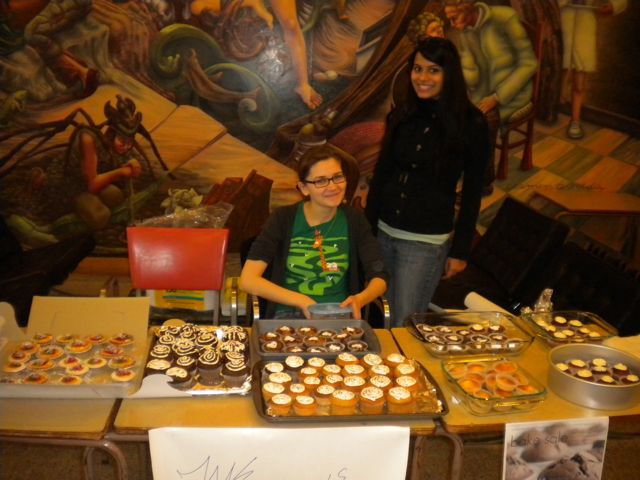|
Van Von Hunter
''Van Von Hunter'' is a weekly hand-drawn parody manga started in 2002 by Mike Schwark and Ron Kaulfersch of Pseudomé Studio, based in Cleveland, Ohio.Giddens, Tharon (July 9, 2006). "Vampire hunter has stake in paper". ''The Augusta Chronicle'', Pg. G3. It has been published in newspapers, books, and as a webcomic. The story takes place in the land of Dikay, a country fraught with zombies, and focuses on the warrior Van Von Hunter and his "never-ending fight against evil...stuff". Publication history In the Summer of 2006, ''Van Von Hunter'' started a six-month run of Sunday newspapers. It was syndicated by Universal Press Syndicate, published in approximately 30 papers in North America (and one in Sweden), including the ''Los Angeles Times'', ''The Denver Post'', the ''Seattle Post-Intelligencer'', ''The Detroit News'', ''The Oregonian'', ''The Vancouver Sun'', and the ''Toronto Sun''.Memmott, Carol (December 29, 2005). "Comics pages make room for manga; Newspapers target th ... [...More Info...] [...Related Items...] OR: [Wikipedia] [Google] [Baidu] |
WikiProject Webcomics
A WikiProject, or Wikiproject, is a Wikimedia movement affinity group for contributors with shared goals. WikiProjects are prevalent within the largest wiki, Wikipedia, and exist to varying degrees within sister projects such as Wiktionary, Wikiquote, Wikidata, and Wikisource. They also exist in different languages, and translation of articles is a form of their collaboration. During the COVID-19 pandemic, CBS News noted the role of Wikipedia's WikiProject Medicine in maintaining the accuracy of articles related to the disease. Another WikiProject that has drawn attention is WikiProject Women Scientists, which was profiled by '' Smithsonian'' for its efforts to improve coverage of women scientists which the profile noted had "helped increase the number of female scientists on Wikipedia from around 1,600 to over 5,000". On Wikipedia Some Wikipedia WikiProjects are substantial enough to engage in cooperative activities with outside organizations relevant to the field at issue. For e ... [...More Info...] [...Related Items...] OR: [Wikipedia] [Google] [Baidu] |
Peach Fuzz (manga)
''Peach Fuzz'' is an original English-language manga written and illustrated by Lindsay Cibos and Jared Hodges. It was published in North America and the United Kingdom by Tokyopop in three volumes from January 11, 2005, to December 11, 2007. ''Peach Fuzz'' originally started as a short 17-page story in Tokyopop's 2nd Rising Stars of Manga competition, where it won the grand prize. The series also appeared in a Sunday comic strip form within Sunday newspaper comics sections. ''Peach Fuzz'' focuses on the relationship between a young girl and a ferret who believes herself to be a princess. Plot The series begins when Amanda desires a unique pet and chooses a young ferret at the local pet shop. Her mother reluctantly yields to her decision on the condition that it should never injure her. Amanda names it Peach after seeing a fruit stand with peaches. Terrified of losing her new pet and companion, Amanda keeps Peach's biting a secret. Peach, in turn, rebels in a self-congratulatory ... [...More Info...] [...Related Items...] OR: [Wikipedia] [Google] [Baidu] |
Sentience
Sentience is the capacity to experience feelings and sensations. The word was first coined by philosophers in the 1630s for the concept of an ability to feel, derived from Latin '':wikt:sentientem, sentientem'' (a feeling), to distinguish it from the ability to think (''reason''). In modern Western philosophy, sentience is the ability to experience Sense, sensations. In different Asian religions, the word 'sentience' has been used to translate a variety of concepts. In science fiction, the word "sentience" is sometimes used interchangeably with "Wisdom#Sapience, sapience", "self-awareness", or "consciousness". Some writers differentiate between the mere ability to perceive sensations, such as light or pain, and the ability to perceive emotions, such as fear or grief. The subjective awareness of experiences by a Consciousness, conscious individual are known as qualia in Western Philosophy of mind, philosophy. Philosophy and sentience In philosophy, different authors draw differen ... [...More Info...] [...Related Items...] OR: [Wikipedia] [Google] [Baidu] |
Ghouls
A ghoul ( ar, غول, ') is a demon-like being or monstrous humanoid. The concept originated in pre-Islamic Arabian religion, associated with graveyards and the consumption of human flesh. Modern fiction often uses the term to label a certain kind of undead monster. By extension, the word ghoul is also used in a derogatory sense to refer to a person who delights in the macabre or whose occupation directly involves death, such as a gravedigger or graverobber. Etymology Ghoul is from the Arabic ''ghūl'', from ''ghāla'', "to seize". In Arabic, the term is also sometimes used to describe a greedy or gluttonous individual. See also the etymology of gal and gala: "to cast spells," "scream," "crow," and its association with "warlike ardor," "wrath," and the Akkadian "gallu," which refer to demons of the underworld. The term was first used in English literature in 1786 in William Beckford's Orientalist novel ''Vathek'', which describes the ''ghūl'' of Arabic folklore. Th ... [...More Info...] [...Related Items...] OR: [Wikipedia] [Google] [Baidu] |
Undead
The undead are beings in mythology, legend, or fiction that are deceased but behave as if alive. Most commonly the term refers to corporeal forms of formerly-alive humans, such as mummies, vampires, and zombies, who have been reanimated by supernatural means, technology, or disease. In some cases (for example in Dungeons & Dragons) the term also includes incorporeal forms of the dead, such as ghosts. The undead are featured in the belief systems of most cultures, and appear in many works of fantasy and horror fiction. The term is also occasionally used for real-life attempts to resurrect the dead with science and technology, from early experiments like Robert E. Cornish's to future sciences such as "chemical brain preservation" and "cryonics." History Bram Stoker considered using the title, ''The Un-Dead'', for his novel '' Dracula'' (1897), and use of the term in the novel is mostly responsible for the modern sense of the word. The word does appear in English before Stoker ... [...More Info...] [...Related Items...] OR: [Wikipedia] [Google] [Baidu] |
Vampires
A vampire is a mythical creature that subsists by feeding on the vital essence (generally in the form of blood) of the living. In European folklore, vampires are undead creatures that often visited loved ones and caused mischief or deaths in the neighbourhoods they inhabited while they were alive. They wore shrouds and were often described as bloated and of ruddy or dark countenance, markedly different from today's gaunt, pale vampire which dates from the early 19th century. Vampiric entities have been recorded in cultures around the world; the term ''vampire'' was popularized in Western Europe after reports of an 18th-century mass hysteria of a pre-existing folk belief in the Balkans and Eastern Europe that in some cases resulted in corpses being staked and people being accused of vampirism. Local variants in Eastern Europe were also known by different names, such as ''shtriga'' in Albania, ''vrykolakas'' in Greece and ''strigoi'' in Romania. In modern times, the vampire ... [...More Info...] [...Related Items...] OR: [Wikipedia] [Google] [Baidu] |
Brunch
Brunch is a meal eaten between 10:00 a.m. and 2:00 p.m., sometimes accompanied by alcoholic drinks (typically champagne or a cocktail). The meal originated in the British hunt breakfast. The word ''brunch'' is a portmanteau of ''breakfast'' and ''lunch''. The word originated in England in the late 19th century, and became popular in the United States in the 1930s. Origin of the word The 1896 supplement to the ''Oxford English Dictionary'' cites ''Punch'' magazine, which wrote that the term was coined in Britain in 1895 to describe a Sunday meal for "Saturday-night carousers" in the writer Guy Beringer's article "Brunch: A Plea" in ''Hunter's Weekly''. Despite the substantially later date, it has also been claimed that the term was possibly coined by reporter Frank Ward O'Malley, who wrote in the early 20th century for the New York newspaper '' The Sun'' from 1906 until 1919. It's thought that he may have come up with the term after observing the typical mid-day eating habi ... [...More Info...] [...Related Items...] OR: [Wikipedia] [Google] [Baidu] |
Minotaur
In Greek mythology, the Minotaur ( , ;. grc, ; in Latin as ''Minotaurus'' ) is a mythical creature portrayed during classical antiquity with the head and tail of a bull and the body of a man or, as described by Roman poet Ovid, a being "part man and part bull". He dwelt at the center of the Labyrinth, which was an elaborate maze-like construction designed by the architect Daedalus and his son Icarus, on the command of King Minos of Crete. The Minotaur was eventually killed by the Athenian hero Theseus. Etymology The word ''minotaur'' derives from the Ancient Greek , a compound of the name ( Minos) and the noun "bull", translated as "(the) Bull of Minos". In Crete, the Minotaur was known by the name Asterion, a name shared with Minos' foster-father. "Minotaur" was originally a proper noun in reference to this mythical figure. That is, there was only the one Minotaur. In contrast, the use of "minotaur" as a common noun to refer to members of a generic "species" of bull- ... [...More Info...] [...Related Items...] OR: [Wikipedia] [Google] [Baidu] |
Bake Sale
A bake sale, also known as a cake sale or cake stall, is a fundraising activity where baked goods such as doughnuts, cupcakes and cookies, sometimes along with other foods, are sold. Bake sales are usually held by small, non-profit organizations, such as clubs, school groups and charitable organizations. Bake sales are often set up around an area of pedestrian traffic, such as outside a grocery store or at a busy intersection near a mall. Bake sales are also a popular fund raising activities within corporations. Items Possible items that are popularly available at a bake sale may include the following: * brownies * cake slices * cookies * cupcakes * doughnuts * granola bars * muffin A muffin is an individually portioned baked product, however the term can refer to one of two distinct items: a part-raised flatbread (like a crumpet) that is baked and then cooked on a griddle (typically unsweetened), or an (often sweetened) ...s * pie slices * Rice Krispies Treats Themes ... [...More Info...] [...Related Items...] OR: [Wikipedia] [Google] [Baidu] |
Christmas Elf
In English-speaking cultures, a Christmas elf is a diminutive elf that lives with Santa Claus at the North Pole and acts as his helper. Christmas elves are usually depicted as green- or red-clad, with large, pointy ears and wearing pointy hats. They are most often depicted as humanoids, but sometimes as furry mammals with tails. Santa's elves are often said to make the toys in Santa's workshop and take care of his reindeer, among other tasks. They were first introduced in literature by Louisa May Alcott in 1856. Santa is much older, emerging in U.S. folklore in the early 17th century from St. Nicholas with attributes of various European Christmas traditions, especially from English Father Christmas and Dutch Sinterklaas. The association of Christmas presents with elves has precedents in the first half of the 19th century with the Scandinavian nisse or tomte, and St Nicholas himself is called an elf in ''A Visit from St. Nicholas'' (1823). Origin The origins of the elf are sa ... [...More Info...] [...Related Items...] OR: [Wikipedia] [Google] [Baidu] |
Goblins
A goblin is a small, grotesque, monstrous creature that appears in the folklore of multiple European cultures. First attested in stories from the Middle Ages, they are ascribed conflicting abilities, temperaments, and appearances depending on the story and country of origin, ranging from mischievous household spirits to malicious, bestial thieves. They often have magical abilities similar to a fairy or demon, such as the ability to shapeshift. Similar creatures include brownies, dwarves, duendes, gnomes, imps, leprechauns, and kobolds, but it is also commonly used as a blanket term for all small, fay creatures. The term is sometimes expanded to include goblin-like creatures of other cultures, such as the pukwudgie, dokkaebi or ifrit. Etymology Alternative spellings include ''gobblin'', ''gobeline'', ''gobling'', ''goblyn'', ''goblino'', and ''gobbelin''. The term "goblette" has been used to refer to female goblins. The word ''goblin'' is first recorded in the 14th century ... [...More Info...] [...Related Items...] OR: [Wikipedia] [Google] [Baidu] |







_(14566641580).jpg)